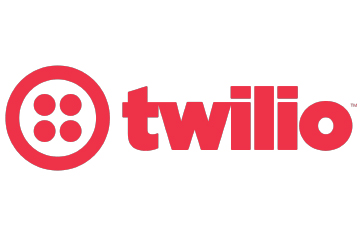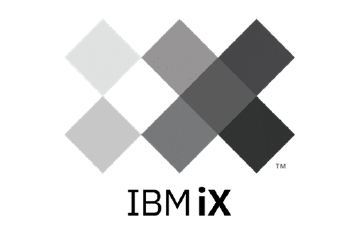Consistent Omnichannel Service Is Still A Concern
Martechvibe spoke to Mostafa Kamel - Head of User Experience | Mrsool about how various technological advancements can help brands improve CX, omnichannel service, and CX strategies.
Topics
What to Read Next

Brands must implement a unified approach to omnichannel service that incorporates consistent messaging, techniques, and standards across all channels, says Mostafa Kamel, a speaker at the CX NXT – the customer experience summit taking place in the Kingdom of Saudi Arabia on March 14-15, 2023.
Ahead of his session, Martechvibe spoke to him. about how various technological advancements can help brands improve CX, omnichannel service, and CX strategies.
Excerpts from the interview
What is the role of technology in improving your CX?
AI and ML are expected to significantly enhance CX by enabling brands to deliver personalised, real-time customer experiences. AI-powered chatbots, for example, can handle customer inquiries and provide immediate assistance 24/7.
Technology will enable brands to collect and analyse customer data from multiple sources, including online and in-store interactions, to gain insights into customer preferences and behaviour. This data can be used to improve customer targeting and personalisation efforts.
Chatbots and virtual assistants are expected to become increasingly sophisticated and integrated with voice assistants such as Alexa and Google Home. This will make it easier for customers to interact with brands and access information and support.
The continued growth of mobile technology will lead to the development of new mobile-first CX solutions, such as mobile payments and location-based services. Brands must ensure that their CX is optimised for mobile devices to meet the growing demand for mobile-friendly experiences.
AR and VR are expected to play a growing role in enhancing CX by allowing customers to experience products and services more immersively.
In summary, technology will continue to play a significant role in improving CX in 2023. Brands that embrace and effectively utilise technology will be well-positioned to deliver better CX and stay ahead of the competition.
What is the biggest challenge brands face when delivering omnichannel service?
One of the biggest challenges brands face when delivering omnichannel service is consistency. Ensuring a consistent and seamless experience across all channels can be difficult, especially when different teams with different systems and processes manage other channels. To overcome this challenge, brands must implement a unified approach to omnichannel service that incorporates consistent messaging, techniques, and standards across all channels.
Another challenge is data integration. Omnichannel service requires integrating customer data from multiple sources, including in-store, online, and mobile interactions. Brands must ensure that they have the right technology and processes to effectively collect, store, and analyse customer data to deliver personalised and relevant experiences.
Additionally, delivering omnichannel service requires significant technology, personnel, and training investments. Brands must allocate the necessary resources to ensure that they can effectively implement and manage an omnichannel strategy.
Finally, ensuring a high level of service quality across all channels can be challenging. Brands must implement effective quality assurance processes and train their personnel to deliver consistent, high-quality service across all channels.
Are you taking a new CX approach for GenZ?
The best way to get a handle on CX with Gen Z is to make it personal.
Offer personalised experiences and choices that reflect their individual preferences and lifestyles. Make sure your CX is optimised for mobile.
Be open and transparent about your brand values and practices, as Gen Z values authenticity and transparency. Use social media to connect with Gen Z customers and provide them with a platform for advocacy and feedback. Show that your brand positively impacts the world, which is essential to Gen Z customers. Incorporate gamification elements into your CX to engage and motivate Gen Z customers. Foster a sense of community by providing opportunities for Gen Z customers to engage with each other.
How are you measuring CX and feedback on your current CX strategies?
We measure CX and gather customer feedback through a variety of methods, including:
- Customer Surveys: Regular customer satisfaction surveys can provide valuable insights into customers’ perceptions of a company’s CX. Surveys can be conducted through various email, SMS, or in-app surveys.
- Net Promoter Score (NPS): NPS is a measure of customer loyalty calculated by asking customers to rate their likelihood of recommending a company’s products or services to others on a scale of 0-10. Companies can use NPS to track customer satisfaction over time and make improvements.
- Customer Feedback Forms: Providing customers with an easy way to give feedback, such as through a feedback form on a company’s website or in-app, can help companies understand what they’re doing well and where they need to improve.
- Social Media Monitoring: Monitoring social media platforms, such as Twitter, Facebook, and Instagram, can provide valuable insights into customer opinions and feedback.
- Call Center and Chat Logs: Analysing call centre and chat logs can provide valuable insights into customer interactions and help companies identify common customer pain points and areas for improvement.
- Website Analytics: Tracking website metrics, such as page views, time on site, and bounce rate, can provide valuable insights into customer behaviour and help companies improve their website experience.
In summary, we use a combination of methods to measure our CX and gather customer feedback, including customer surveys, NPS, customer feedback forms, social media monitoring, call centre and chat logs, and website analytics. Our specific methods depend on the goals, resources, and target audience.
How do you determine the impact of customers’ emotions on the ongoing CX strategies?
We can determine the impact of customers’ emotions on their ongoing CX strategies in several ways, including:
- Customer Surveys: Asking customers about their emotional state during specific interactions can provide valuable insights into how emotions impact the overall customer experience.
- Sentiment Analysis: Companies can use sentiment analysis tools to analyse customer feedback and determine the overall emotional tone of customer interactions. This can help companies understand customers’ feelings and identify emotional pain points.
- Voice and Face Analysis: Advances in technology have made it possible to analyse customers’ voices and facial expressions to determine their emotional state. This can provide valuable insights into how customers feel in real-time, allowing companies to respond and adjust their CX strategies accordingly.
- Customer Journey Mapping: Mapping the customer journey can help companies understand the emotional drivers of customer behaviour and identify opportunities to improve the customer experience.
- Focus Groups and Customer Interviews: Conducting focus groups and customer interviews can provide valuable insights into how customers feel and what emotions drive their behaviour.
In summary, we can determine the impact of customers’ emotions on their ongoing CX strategies by combining methods, including customer surveys, sentiment analysis, voice and face analysis, customer journey mapping, focus groups and customer interviews. And as I mentioned before, the specific methods we use depend on the goals, resources, and target audience.








































































































